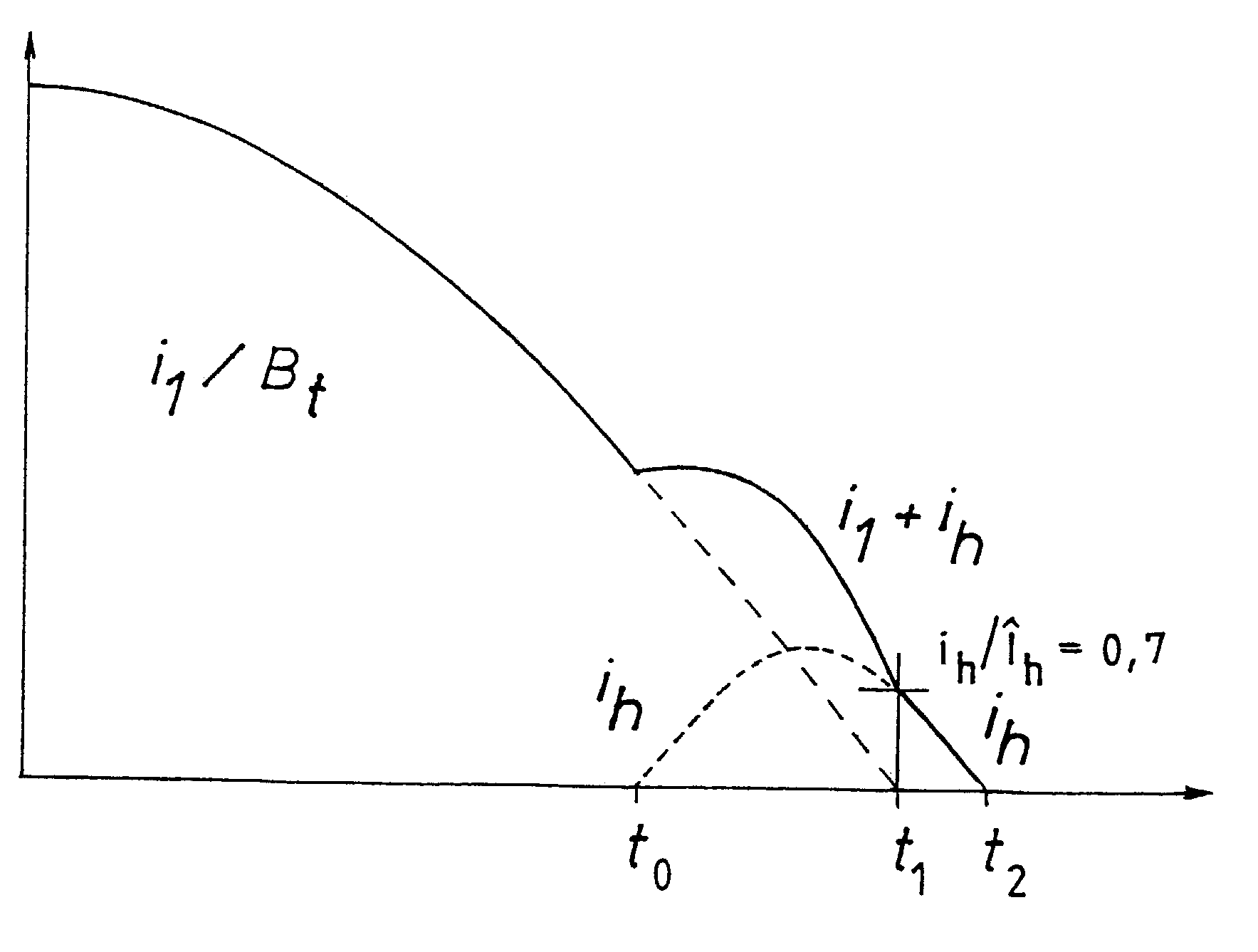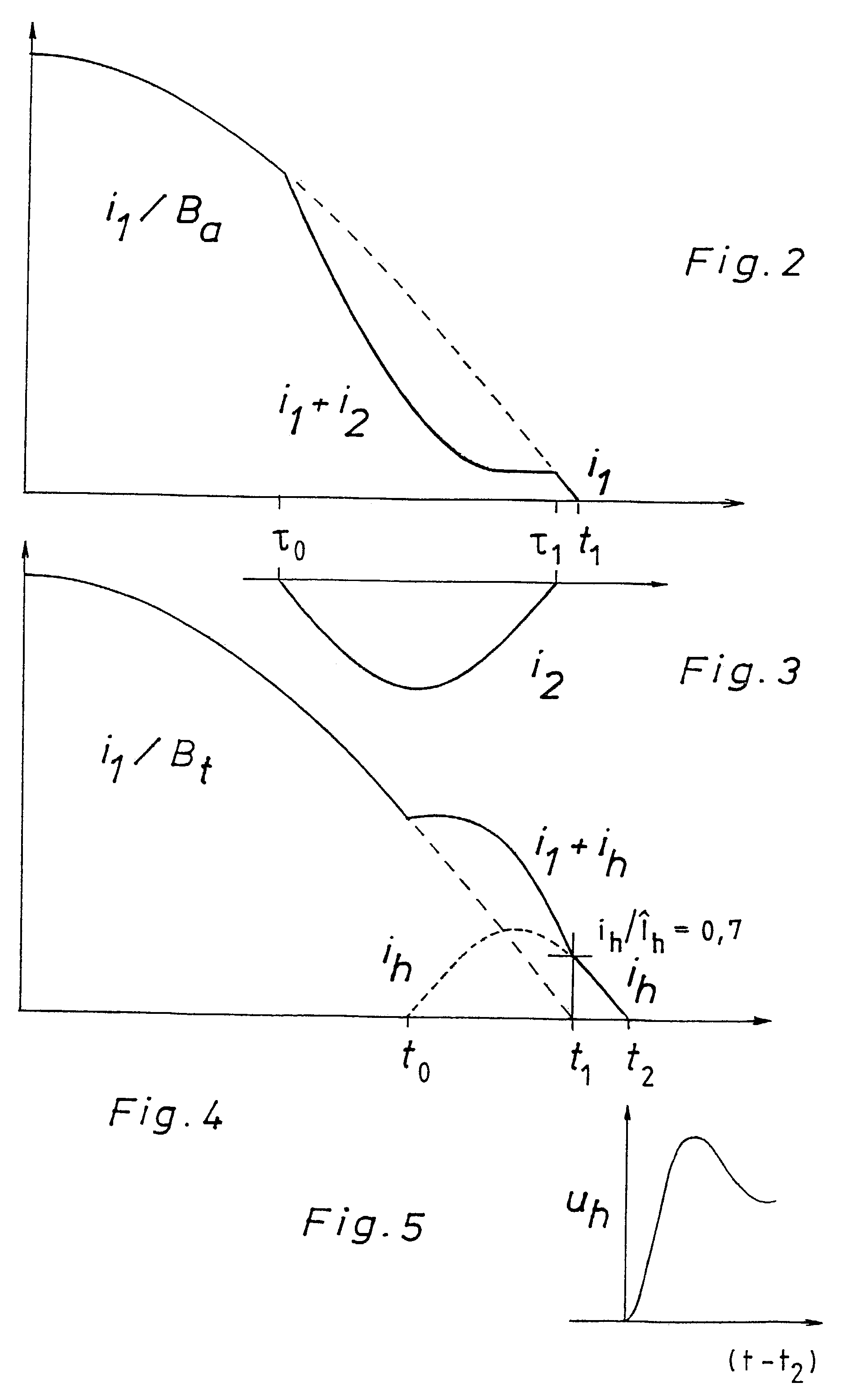Synthetic equivalence test circuit for circuit breaker testing
a test circuit and circuit breaker technology, applied in the direction of circuit interrupter testing, measurement devices, instruments, etc., can solve the problems of increasing the source voltage in the high-current circuit, the characteristics of the primary current do not conform to the conditions, and the object is unjustified, so as to reduce the high current, shorten the arcing time, and reduce the arc voltage
- Summary
- Abstract
- Description
- Claims
- Application Information
AI Technical Summary
Benefits of technology
Problems solved by technology
Method used
Image
Examples
Embodiment Construction
[0032]The high-current circuit of FIG. 1 comprises: a generator G as a high-current source, with or without a following transformer, if applicable; a resulting inductance L1 co-representing an additional current-limiting inductance; a master circuit breaker (not shown); a making switch (not shown); an auxiliary switch Ba; and a test switch Bt.
[0033]Also shown in FIG. 1, the high-voltage oscillating circuit comprises: a capacitance Ch chargeable to high voltage; an inductance Lh; a triggerable spark gap SGh; a capacitance Ct parallel to the test switch, if necessary; an ohmic resistance connected in series; an ohmic resistance Rt connected parallel to the test switch; and, if necessary, a line impedance simulating circuit LSC between the test switch and capacitance Ct.
[0034]The control consists of a high-current transformer CTh and a device for generating a time-programmable ignition impulse for the triggerable spark gap CDh.
[0035]With the master circuit breaker and the making switch...
PUM
 Login to View More
Login to View More Abstract
Description
Claims
Application Information
 Login to View More
Login to View More - R&D
- Intellectual Property
- Life Sciences
- Materials
- Tech Scout
- Unparalleled Data Quality
- Higher Quality Content
- 60% Fewer Hallucinations
Browse by: Latest US Patents, China's latest patents, Technical Efficacy Thesaurus, Application Domain, Technology Topic, Popular Technical Reports.
© 2025 PatSnap. All rights reserved.Legal|Privacy policy|Modern Slavery Act Transparency Statement|Sitemap|About US| Contact US: help@patsnap.com



